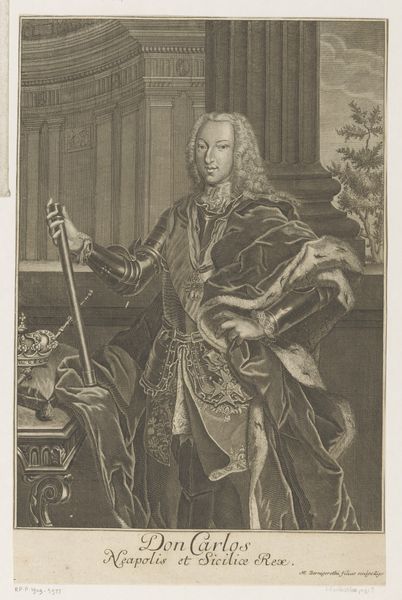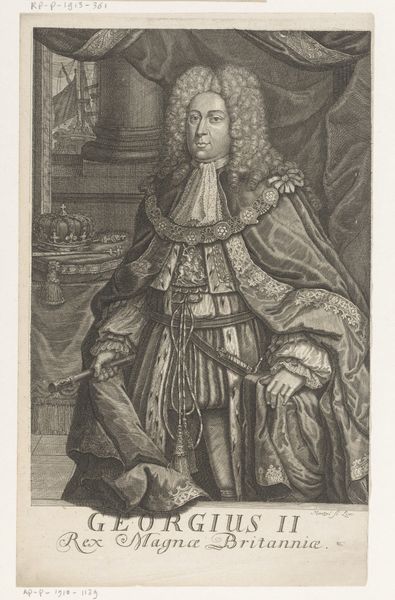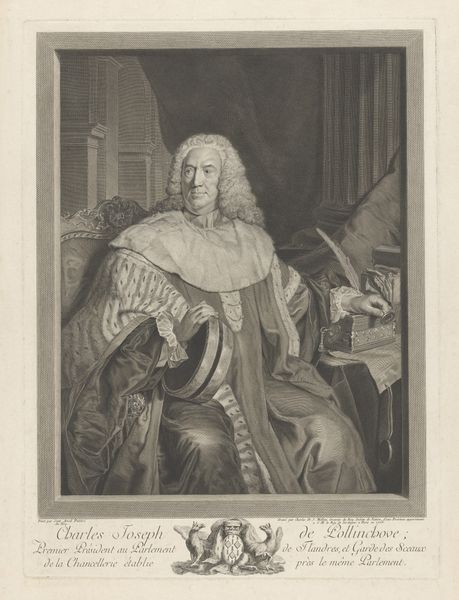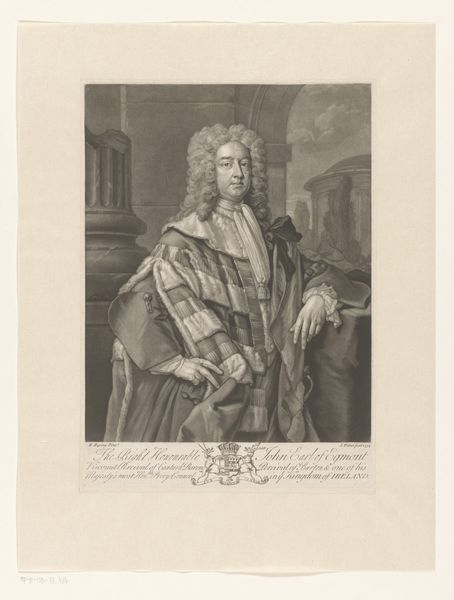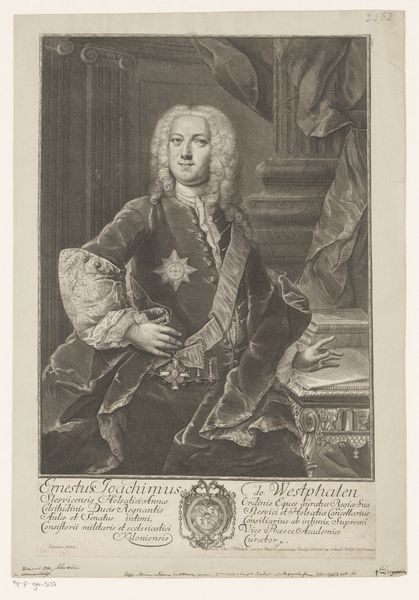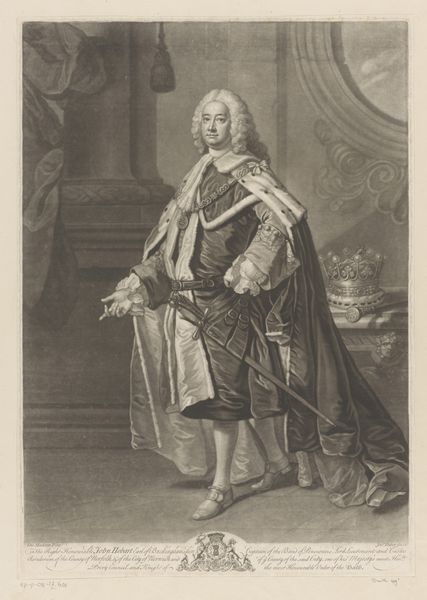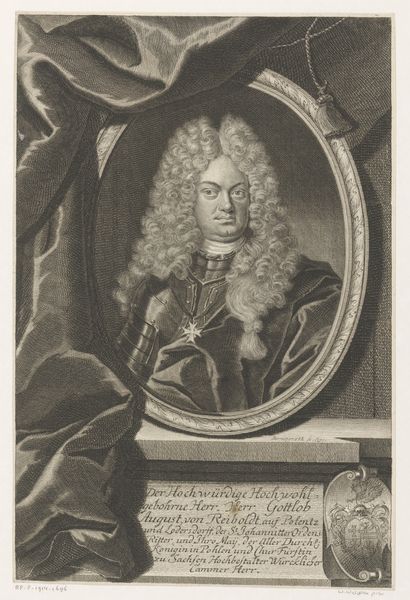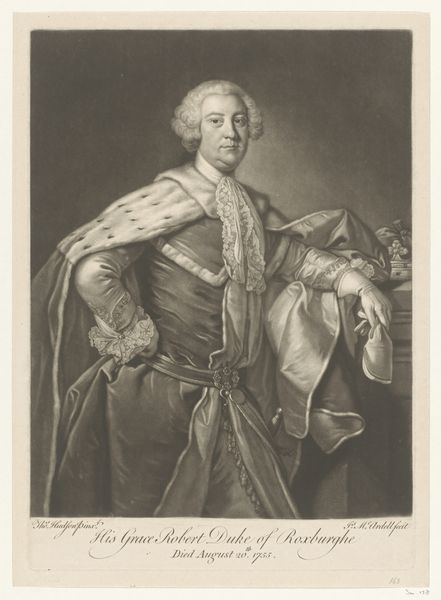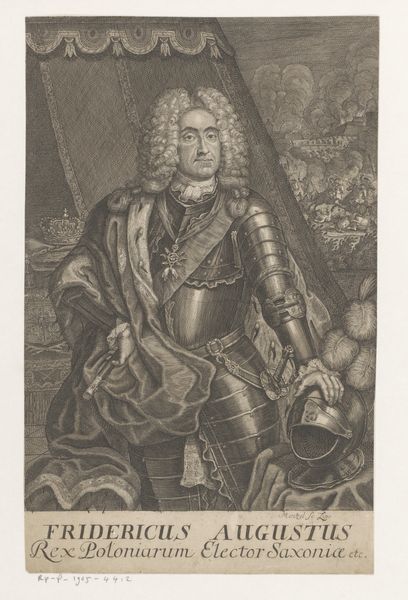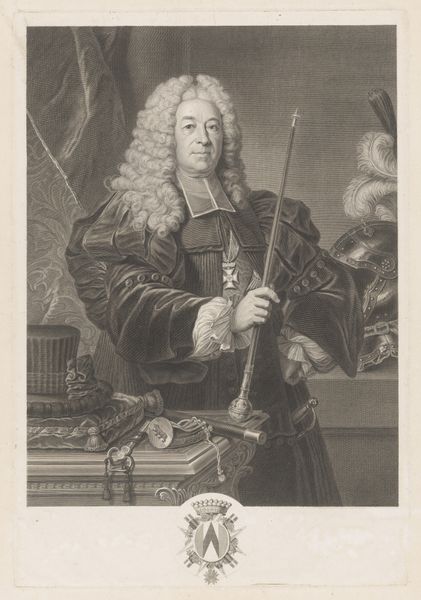
Portret van Franz I Stephan, Rooms-Duits keizer 1745 - 1767
print, metal, engraving
portrait
baroque
metal
old engraving style
personal sketchbook
historical photography
history-painting
engraving
Dimensions: height 330 mm, width 212 mm
Copyright: Rijks Museum: Open Domain
Curator: Here we have an engraving, "Portret van Franz I Stephan, Rooms-Duits keizer" or "Portrait of Francis I Stephen, Holy Roman Emperor" by Johann Martin Bernigeroth, dating from sometime between 1745 and 1767. Editor: The first thing I notice is the overwhelming texture, a dance of lines and hatching building form out of near monochrome. The figure is certainly dominant. Curator: Indeed. Looking closely, one can see how this image fits into a long lineage of royal portraiture, reinforcing power through careful visual messaging. The armour, the ermine robe, the column... all signifiers of imperial authority. This portrait embodies a baroque aesthetic, celebrating the Emperor’s identity and divine right to rule, against a backdrop of increasing challenges to traditional power structures. Editor: Observe how the textures vary. The sheen on the armor contrasts beautifully with the softer folds of fabric. The lines almost vibrate to emphasize certain key shapes. Curator: Consider also the Hapsburg double-headed eagle crest visible above. By situating Francis I Stephan alongside that heraldic device, Bernigeroth explicitly links the Emperor's personal authority to a centuries-long dynastic history and claims to political dominance across Europe. Editor: And notice how it mirrors the pose, with a similar kind of regal frontality that seems staged. Both point towards empire in ways that build meaning via their structured display. Curator: Absolutely, a deliberate use of composition to communicate clear messages. Though this print exists now in the Rijksmuseum, its original circulation as a widely distributed print undoubtedly shaped popular perceptions and legitimized Franz I's reign amidst various political and religious tensions during the mid-18th century. These images often served as key tools in building national narratives and influencing public opinion. Editor: The controlled visual vocabulary effectively creates a sense of dignity. Through semiotic framing, and masterful handling of tonal balance, it manages to project a specific meaning in quite an alluring way. I appreciate its texture most of all! Curator: Thinking about the function this artwork served and how people would have engaged with it back then allows a glimpse into the wider society. Editor: Indeed, and in this instance, the artist's ability to coax such expressive light from simple textures creates a striking, historically relevant portrait.
Comments
No comments
Be the first to comment and join the conversation on the ultimate creative platform.
